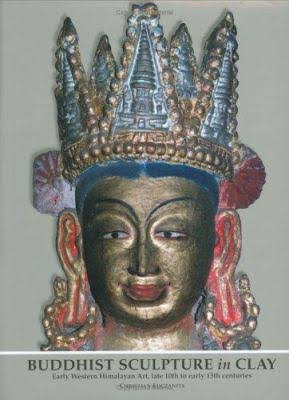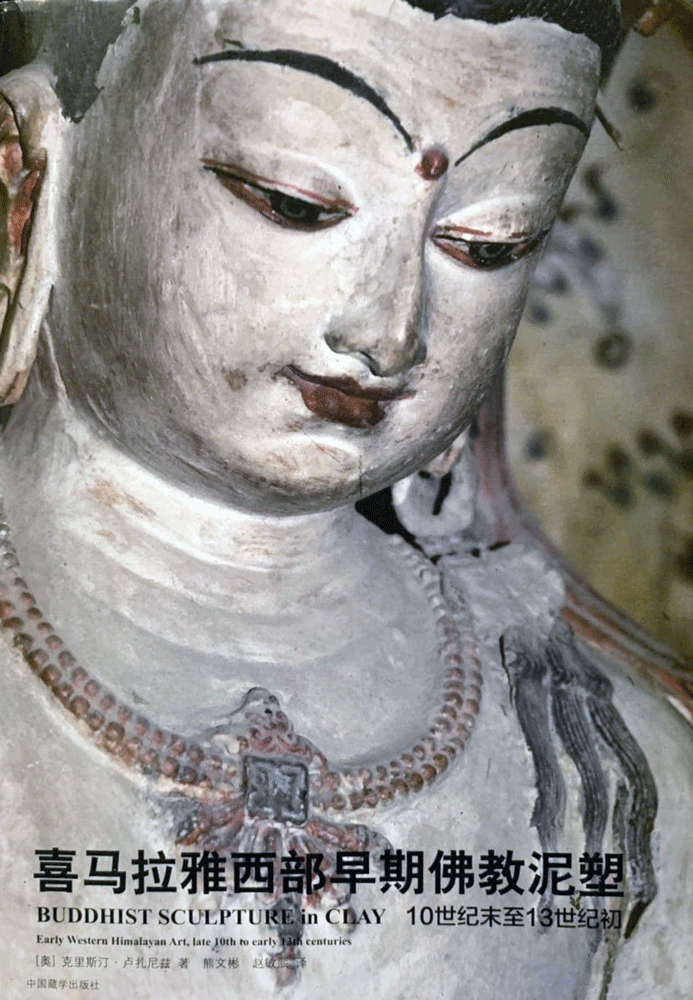
Buddhist Sculpture in Clay:
Early Western Himalayan Art, late 10th to early 13th centuries
Many of Buddhist monasteries and village temples built from the end of the 10th to the early 13th centuries in West Tibet and Ladakh feature clay sculptures. These sculptures are usually found in the main niches along the central axis of temples and are the main theme of a temple's furnishing/decoration. Thus these images constitute a major source for the history of the independent tradition of western Himalayan (Indo-Tibetan) art. A detailed survey of these sculptures and their relationship with contemporaneous paintings provides us with the first cultural and religious history of western Himalayan art. Sources include the Tabo Assembly Hall, Nako, Lalung and the early Alchi temples.
This study illuminates the complex interaction between Indian and Tibetan culture and the variegated forms of local Tibetan Buddhist adaptations. As with contemporaneous paintings, these sculptures reflect late Northwest-Indian Buddhist art for which otherwise little evidence remains. The comparison of clay sculpture with painting and other art forms such as woodcarving, provides us with a more detailed view on the origin and development of western Himalayan art.
Bibliographic Data
Buddhist Sculpture in Clay: Early Western Himalayan Art, late 10th to early 13th centuries.
Serindia Publications, Chicago
Size: 230 x 295 mm / 9 x 11.5 in
Pages: 368; Color: 323
Binding: Hardcover
Available: since April 2004
ISBN: 1-932476-02-4
Reviews (with links to  files)
files)
- Anne Chayet in Arts Asiatiques, vol. 60, 2005: p. 181–82.
- Erberto Lo Bue in East & West, 2006: p. 497–99.
- Pratapaditya Pal in Marg Vol. 56, no. 2, 2004: p. 91.
- Katherine Anne Paul in The Journal of Asian Studies, col. 65, no. 2, May 2006: 442–444.
Content Description
The introductory chapter briefly summarizes the history of clay sculpture in the Indian cultural world and sculptural techniques as described in the Indian classical literature.
The main chapter introduces the western Himalayan monuments and their sculptures, dividing them into three groups defined by historical and geographic parameters. Each monument is surveyed in turn and its relationship with other monuments discussed. Special sections describe the sculptures of each site in detail and highlight the distinctive character of the art for each group.
An extensive comparative section focuses on the character of western Himalayan sculpture and presents a classification of main iconographic topics and styles, aspects of ornamentation, framing of the sculptures, and construction techniques.
The final chapter summarizes how the heritage of early western Himalayan art and sculpture has continued.
Table of Contents
CHAPTER 1: SCULPTURES MADE OF CLAY ... 11
- The Classical Indian Technique ... 12
- Sculptural Techniques in the Western Himalayas ... 17
- Early Clay Sculpture in Central Tibet ... 18
CHAPTER 2: ABODES OF THE BUDDHAS ... 21
- THE EARLIEST WEST TIBETAN MONUMENTS ... 25
- Three Major Foundations ... 29
- Tabo ... 33
- Entry Hall ... 35
- Cella ... 35 > ◊ Cella sculptures
- Assembly Hall 43 > ◊ Vajradhātu mandala sculptures
- Ropa ... 57 > ◊ Ropa sculptures
- Minor Early Foundations ... 63
- Tiak ... 64
- Poo ... 66
- Charang Foundation ... 67
- Johling ... 68
- Two Successive Artistic Traditions ... 69
- 12TH CENTURY WEST TIBETAN MONUMENTS ... 75
- Nako ... 77
- Translator’s Temple ... 79 > ◊ Lotsawa Lhakhang sculptures
- Upper Temple ... 84 > ◊ Gongma sculptures
- Lalung ... 89
- Vairocana Chapel ... 90 > four-fold ◊ Vairocana
- Serkhang ... 93 > ◊ Serkhang
- Gumrang ... 107 > ◊ Gumrang sculptures
- Dunkar ... 113
- Diverging Traditions ... 119
- Nako ... 77
- THE ALCHI GROUP OF MONUMENTS ... 125
- Alchi ... 127
- Dukhang ... 128 > ◊ Dukhang niche
- Sumtsek ... 137 > ◊ Sumtsek sculptures
- Mañjuśrī Temple ... 148 > ◊ Jampe Lhakhang sculptures
- Mangyu ... 155 > ◊ Mangyu
- Vairocana Temple ... 156
- Four-armed Maitreya Chapel ... 164
- Two-armed Maitreya Chapel ... 167
- Four-Image Chörten ... 170
- Sumda Chung ... 175 > ◊ Sumda Chung
- Assembly Hall ... 176
- The Two Bodhisattva Chapels ... 186
- A Unique Tradition ... 191
- Alchi ... 127
CHAPTER 3: BUDDHAS COMPARED ... 197
- ICONOGRAPHY ... 201
- Buddha ... 203
- Bodhisattva ... 209
- Goddess ... 214
- Protectors ... 218
- Compositions ... 220
- Iconographic Programmes ... 221
- STYLE AND COMPOSITION ... 225
- Early Western Himalayan Painting Styles ... 226
- Stylistic Relationship of Sculpture and Painting ... 228
- Sculptural Styles ... 234
- ORNAMENTATION AND FRAMES ... 239
- Dressing a mandala sculpture ... 239
- Special Ornaments ... 244
- Throne Constructions and Frames ... 249
- Lotus Scroll ... 256
- CONSTRUCTION TECHNIQUE ... 261
- Mounting ... 262
- Armature ... 265
- Binding Material and Cord ... 267
- Clay ... 268
- Modelling ... 270
- Applied Decoration ... 270
- Painting ... 275
- Proportions of the Tabo mandala sculptures ... 277
CHAPTER 4: SUBSEQUENT BUDDHAS ... 281
- Guge ... 283
- Kinnaur ... 288
- Ladakh ... 291
- The book is based on my PhD covering the same subject. In the PhD the documentation is in the foreground and much more detailed. For example, it includes records of each sculpture that could be studied. In the book publication the general development of Western Himalayan art is in the foreground. The book places the clay sculptures in a wider context and emphasizes what can be learned from them.
Relation to Ph.D.

Since my study depended on a much larger documentation corpus than can be published in a book, the original and complementary pictorial material is provided in the galleries linked to this website. The availability of such material is indicated by the links added to the table of contents in the main column.
Clay Book Errata
- p. 15: second paragraph from the bottom: Citralakśaṇa > Citralakṣaṇa
- p. 50, fig. 40: in the figure description it is mentioned that Mohan Dukhya is also visible on the picture. However, in the picture only his shoulder can be seen on the right edge of the picture.
- p. 67, fig. 64: the picture of Vajrasattva is reversed.
- p. 210, fig. 231: the picture of the four-armed Maitreya is reversed.
Chinese Version
Fifteen years after its initial publication, the book has been published in a Chinese translation.
- Luczanits, Christian. 2018. 喜马拉雅西部早期佛教泥塑: 10世纪末至13世纪初. Beijing: 中国藏学出版社 [China Tibetan Studies Publishing House].

